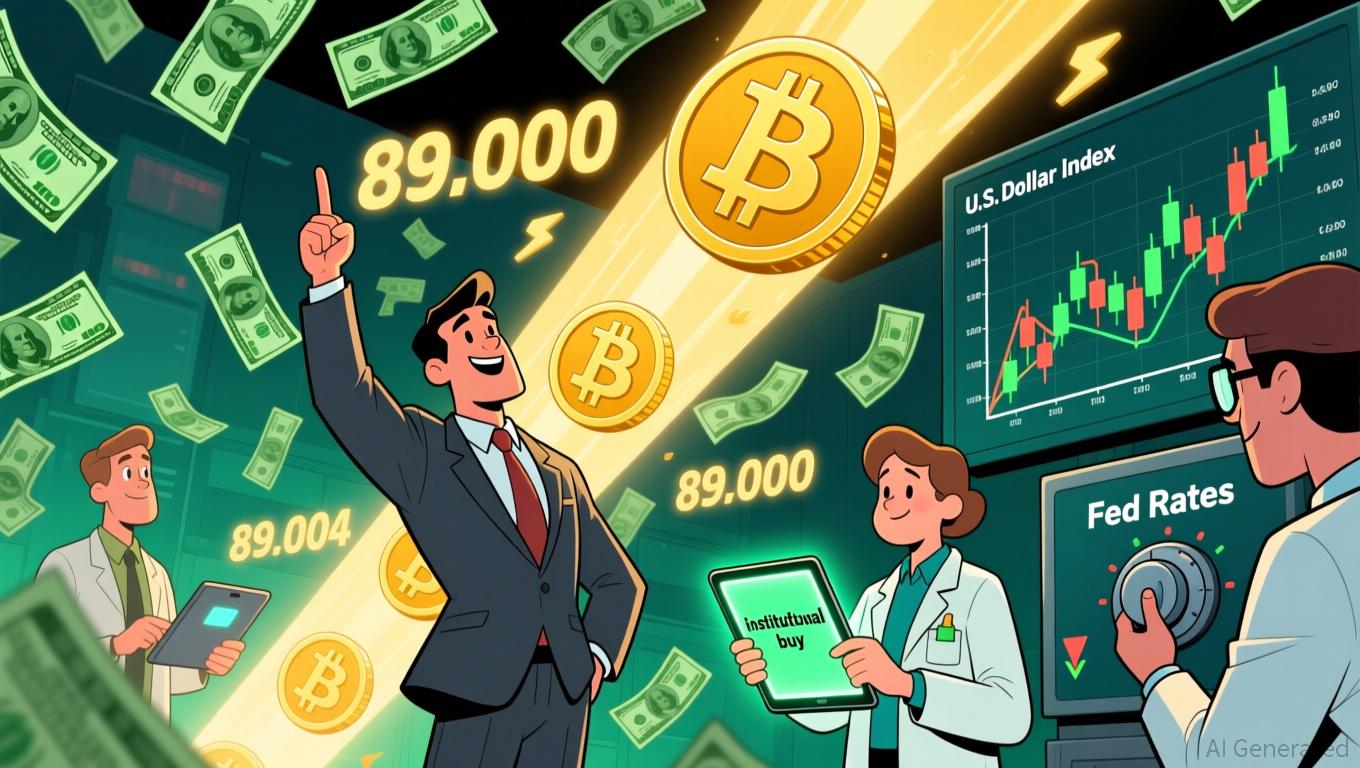Tether CEO Disputes S&P's Rating, Arguing It Reflects Traditional Finance's Misconceptions
- Tether CEO Paolo Ardoino criticized S&P's downgrade of USDT's stability rating, blaming traditional finance's "loathing" and misunderstanding of crypto operations. - S&P cited 5.6% exposure to Bitcoin/gold in Tether's $184B market cap, warning of undercollateralization risks and transparency gaps in reserve management. - Tether reported $10B+ 2025 profits with $6.8B excess reserves and $135B U.S. Treasury holdings, positioning itself as the 17th-largest U.S. debt holder. - Ardoino dismissed S&P's concern
Tether CEO Paolo Ardoino has forcefully responded to Standard & Poor's (S&P) recent downgrade of the stablecoin's peg stability, describing the decision as stemming from "hostility" toward Tether's business model and accusing the traditional financial sector of failing to grasp how the company operates
However, Tether’s financial disclosures present a contrasting narrative. The company posted net profits surpassing $10 billion in the first three quarters of 2025, with $174 billion in liabilities supported by $6.8 billion in surplus reserves and $135 billion invested in U.S. Treasuries
The S&P downgrade has reignited discussions about stablecoin oversight and transparency. While the majority of USDT’s reserves are still held in short-term Treasuries and cash-like assets, the agency faulted
This dispute arises as global regulators increase their scrutiny of stablecoins.

Tether’s ability to keep its dollar peg is crucial to its leading position among stablecoins. With the values of Bitcoin and gold fluctuating amid broader market swings, the company’s approach of diversifying reserves and building institutional relationships could be key to its long-term strength
Disclaimer: The content of this article solely reflects the author's opinion and does not represent the platform in any capacity. This article is not intended to serve as a reference for making investment decisions.
You may also like
Bitcoin Updates: Institutional Investors Return and Soft Policy Hints Drive Bitcoin's Significant Recovery
- Bitcoin surged above $89,000 in late November 2025, reversing a six-month low amid institutional reentry and macroeconomic optimism. - Fed rate-cut expectations (84% for December) and $238M Bitcoin ETF inflows fueled dollar weakness and crypto demand. - Coinbase's 22-day negative premium reversed, signaling easing institutional selling pressure and potential trend reversal. - Solana's $145 slump highlighted crypto divergence, while Bitcoin's $100,000 support and open interest dynamics indicated bearish e

Artificial Intelligence Applications in Biomedical Studies and Their Impact on Investment
- AI is revolutionizing drug discovery by accelerating timelines and reducing costs in pharmaceutical R&D. - Companies like Insilico Medicine and Exscientia use AI to cut drug development cycles by 70% and reduce compound testing, advancing candidates to clinical trials rapidly. - The AI-driven biotech market is projected to reach $350–410 billion annually by 2025, offering investment opportunities in AI-native firms and infrastructure providers. - However, regulatory challenges and the lack of approved AI

Internet Computer’s Latest Rally: Driven by Network Enhancements and Growing Institutional Interest
- Internet Computer (ICP) surged in 2025 due to technical upgrades, institutional partnerships, and speculative trading. - Fission/Stellarator boosted capacity by 50%, while Meridian/Flux aim to enhance cross-chain interoperability and scalability. - Q3 2025 saw $1.14B trading volume but 22.4% DApp engagement drop, highlighting infrastructure-user adoption disconnect. - TVL discrepancies ($237B vs. $1.14B) and reliance on institutional capital raise sustainability concerns amid inflated metrics. - Partners

South Korean Firm Bitplanet Boosts Bitcoin Stack to 228.5 BTC